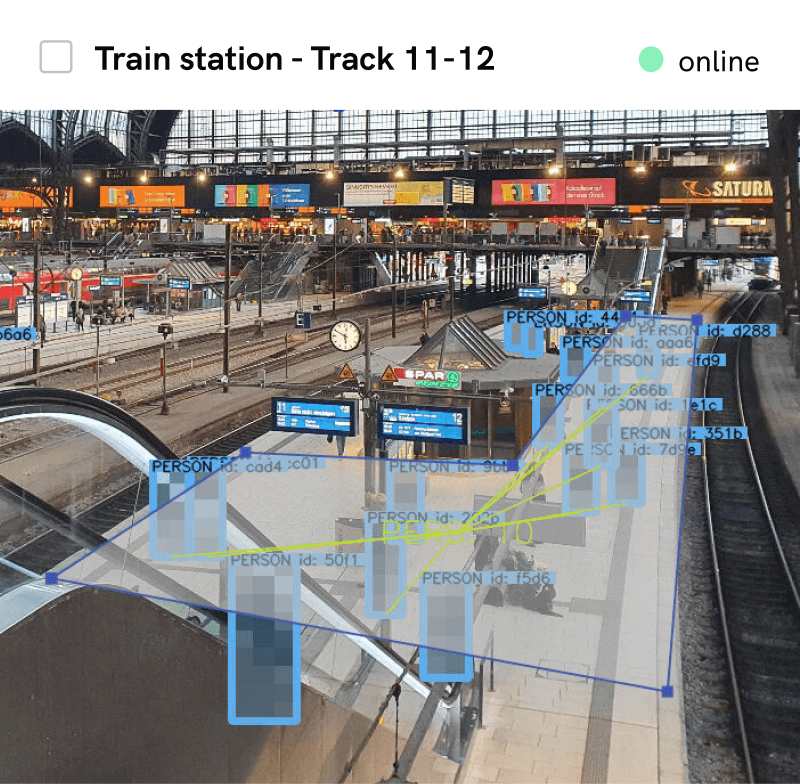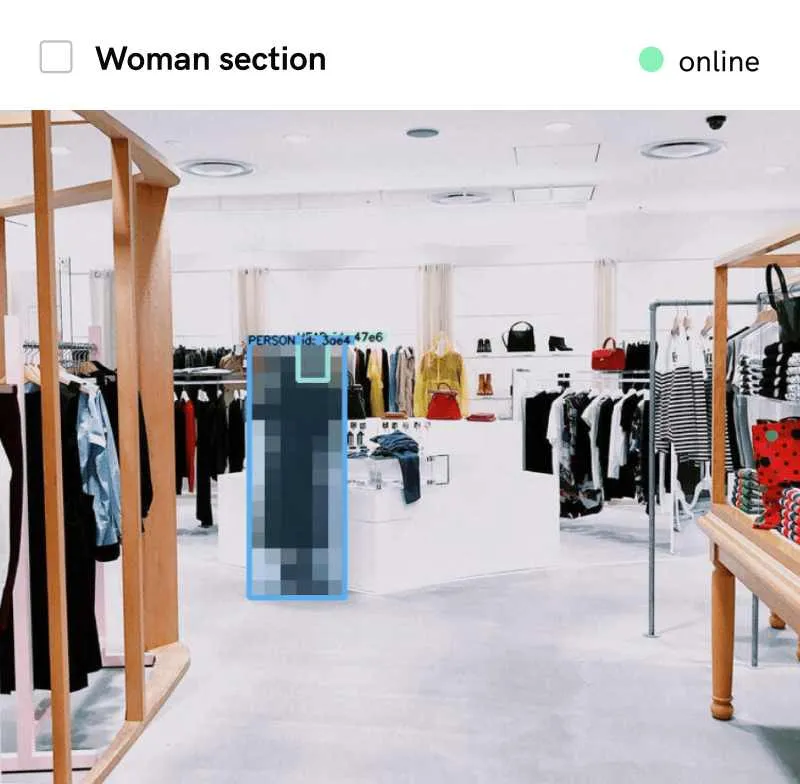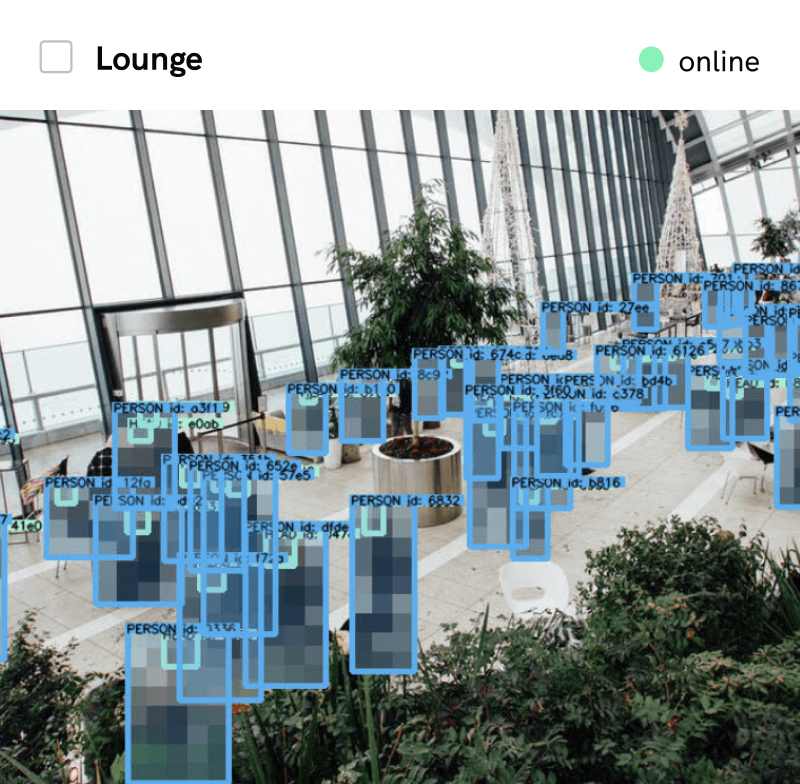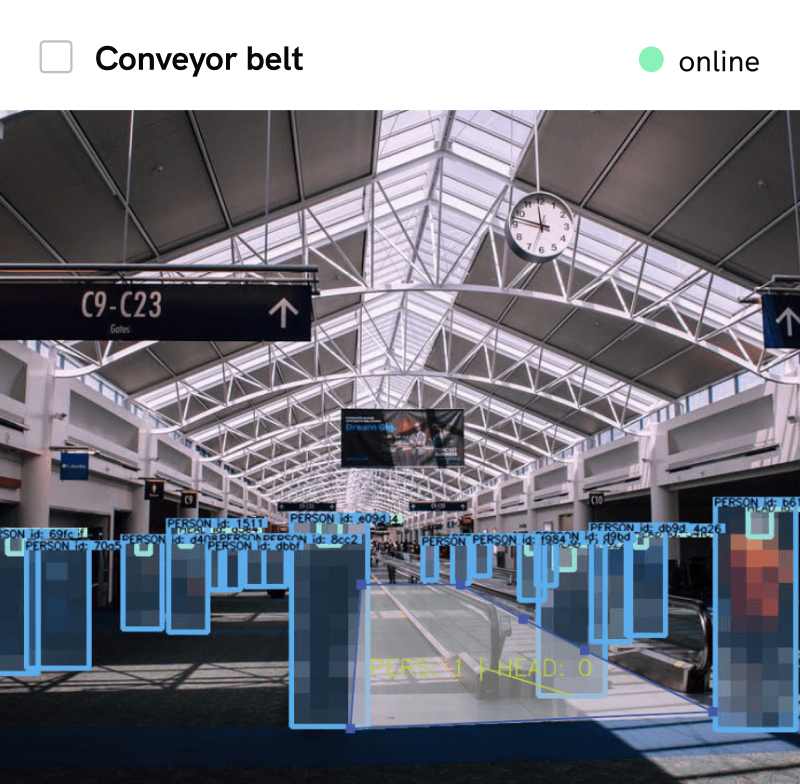How People Counting Enhances Tenant Management in Malls
Managing tenants in shopping malls efficiently requires insightful data to make informed decisions. But how can people counting systems contribute to this? In this article, we’ll delve into the key benefits of people counting technologies for tenant management. Learn how AI video analytics can provide valuable insights into foot traffic patterns, helping mall operators optimize tenant performance, enhance customer satisfaction, and improve space utilization, ultimately driving growth for the entire mall.
Published
September 30, 2024
.avif)
Malls are bustling environments that bring together a variety of stakeholders—shoppers, tenants, mall operators, and organizers—all with different needs and objectives. For shoppers, malls offer a space to explore, socialize, and shop, while tenants aim to attract as much foot traffic as possible to increase sales. At the same time, mall operators and organizers must ensure that the space is optimally managed to meet both shopper and tenant expectations, while driving profitability.
In such a complex ecosystem, the key to tenant management lies in using reliable data. Data-driven decision-making ensures that everything from tenant placement to mall layout, rent calculation, and even promotions are optimized. By leveraging insights into foot traffic patterns, customer flow analysis, and store performance metrics, mall operators can ensure that tenants are positioned in the best locations and that the overall shopping experience is seamless.
This article explores how people counting technologies can transform mall operations by providing real-time insights that enable smarter decisions for tenant management.
Challenges in Tenant Management
Managing tenants in a mall is a multifaceted process that goes beyond simply allocating spaces. Malls are dynamic environments, and with the growing competition in the retail landscape, along with rising expectations from both shoppers and store owners, mall operators face an increasing array of challenges. Each decision needs to be carefully considered to ensure both the tenants’ success and the mall’s overall profitability.
Some of the most critical challenges include:
- Rent calculation: Determining fair rent prices for tenants is a complex task. Malls often have to balance between fixed and performance-based rent structures, taking into account each store's location, foot traffic, and overall contribution to the mall's ecosystem.
- Foot traffic analysis: Understanding how shoppers move throughout the mall is essential for improving the tenant experience. Foot traffic trends not only affect individual store performance but also impact the mall's overall layout and flow, from entrances and exits to stores.
- Performance measurement: Evaluating how well tenants are performing isn’t limited to just sales figures. Mall operators need to consider metrics such as footfall, customer dwell time, and how often visitors engage with a store. This comprehensive performance analysis is crucial for effective tenant management.
- Store placement optimization: The success of a mall often hinges on strategic tenant placement. Mall operators must determine the best locations for tenants based on factors like foot traffic patterns, complementary store groupings, and proximity to anchor tenants. Misplaced tenants can struggle with low visibility, reducing their performance and profitability.
To overcome these challenges effectively, malls need to adopt advanced tools and strategies that allow them to gather and analyze critical data.
How People Counting Enhances Tenant Management
The key to effective tenant management lies in understanding how customers move through the mall. People counting technology provides precise data that mall operators can use to make data-driven decisions that enhance both tenant and mall management.
.avif)
Here are a few specific ways that people counting can enhance tenant management:
Customer Counting
People counting systems play a crucial role in tracking the number of visitors in different areas of the mall. By analyzing customer flow and foot traffic patterns, these systems provide mall managers with invaluable insights into store performance. With real-time data on how many customers visit each store, how long they stay, and which areas attract the most traffic, mall operators can create detailed performance metrics for every tenant. These metrics allow for more informed decision-making regarding store placement, lease agreements, and overall tenant management, ensuring that high-performing stores are rewarded and underperforming tenants receive the support they need to improve.
Foot Traffic Measurement
Understanding foot traffic patterns is essential for establishing fair rent agreements in a mall. People counting technologies accurately measure the flow of visitors through different areas, providing insights into which sections are most frequented and which are underutilized with zone analysis. With this data, mall operators can identify high-traffic and lower-traffic areas, helping them tailor rent agreements accordingly. Tenants in high-traffic locations can be charged premium rents, while those in less busy areas may receive more favorable terms. This ensures a fair and balanced approach to rent calculation, aligning costs with the potential for customer exposure and sales.
Predictive Analysis
Beyond simply tracking current foot traffic, advanced people counting systems can provide powerful predictive analysis. By analyzing historical data on customer movement patterns, dwell times, and peak traffic periods, these systems can forecast future trends, which is invaluable for optimizing store placement within a mall.
For example, predictive analysis can help mall operators anticipate shifts in customer behavior, such as which areas of the mall are likely to experience increased traffic during certain times of the year or in response to specific events and promotions. This allows for proactive decision-making when it comes to leasing out high-demand spaces or rearranging store locations to maximize exposure.
.avif)
AI Video Analytics: The Future of People Counting in Malls
While the benefits of people counting in malls are clear, choosing the right technology to implement is crucial for maximizing its effectiveness. Traditional methods like manual clickers, and surveys have been used for years, but they often lack the precision and flexibility needed in today's data-driven retail environments. AI-powered people counting systems have revolutionized mall management by offering a more sophisticated and scalable approach.

Below are the unique capabilities of AI video analytics that elevate people counting to new levels in mall management:
Accuracy and Reliability
AI-powered video analytics systems are incredibly precise, even in the most challenging environments, such as crowded malls with dense foot traffic. Unlike traditional methods, which may struggle to differentiate between overlapping customers or groups, AI-based solutions use advanced algorithms to accurately count individuals, ensuring that each visitor is accounted for. This high level of accuracy means mall operators can rely on the data to make informed decisions for tenant management.
Real-Time Analysis
One of the most powerful aspects of AI video analytics is its ability to provide real-time analysis of foot traffic patterns and customer behavior. This feature enables mall operators and tenants to respond immediately to changing conditions, such as surges in traffic during promotions or seasonal events. For instance, tenants can adjust staffing levels, deploy marketing strategies, or rearrange store layouts based on real-time data. Mall operators can also use this data to monitor areas that are becoming overcrowded, helping them optimize mall flow and enhance the overall shopping experience.
Ease of Integration
Unlike older technologies that often require new infrastructure or disrupt daily operations, AI video analytics solutions are designed for seamless integration into existing mall systems. These systems can be integrated with current security cameras or other hardware, eliminating the need for costly upgrades or hardware purchases. Moreover, this ease of integration ensures that mall operations continue uninterrupted during installation, preventing any downtime for tenants or customers.
Historical Data Analysis
AI video analytics systems continuously improve over time by collecting and analyzing historical data. The more data the system collects, the better it becomes at identifying trends and making accurate predictions. This long-term analysis is invaluable for malls because it allows operators to track foot traffic patterns across seasons, events, and years. Over time, the system learns from these patterns and can forecast future traffic, enabling mall operators to make proactive decisions about tenant placement.
Privacy-Consciousness
Modern AI video analytics solutions are designed with privacy at their core, ensuring they comply with strict data privacy regulations, such as GDPR. Unlike intrusive technologies that track personal data, AI-based systems focus on collecting anonymous and non-intrusive metrics. This approach reassures mall visitors that their privacy is respected while still allowing mall operators to gather the essential data needed for effective management.
As malls embrace the future of data-driven operations, people counting technologies, powered by AI video analytics, are becoming essential tools for effective tenant management. By delivering actionable insights into customer flow, store performance, and space utilization, these technologies empower mall operators to make smarter decisions that benefit both tenants and mall owners alike. With innovations such as predictive analytics in retail and real-time traffic monitoring, malls are poised to become smarter, more efficient spaces. The result is a win-win situation where mall operators optimize their mall management systems while tenants benefit from a deeper understanding of their customers and the mall environment.
More about Isarsoft
With Isarsoft Perception, your camera systems become part of your business intelligence. Whether the goal is to increase efficiency, customer satisfaction, or safety, Isarsoft Perception provides the insights needed for informed decisions.

Contact us, to learn more about how to turn security cameras into intelligent sensors.
Optimize your business processes.
Improve business processes with video-based business intelligence from Isarsoft.









.webp)